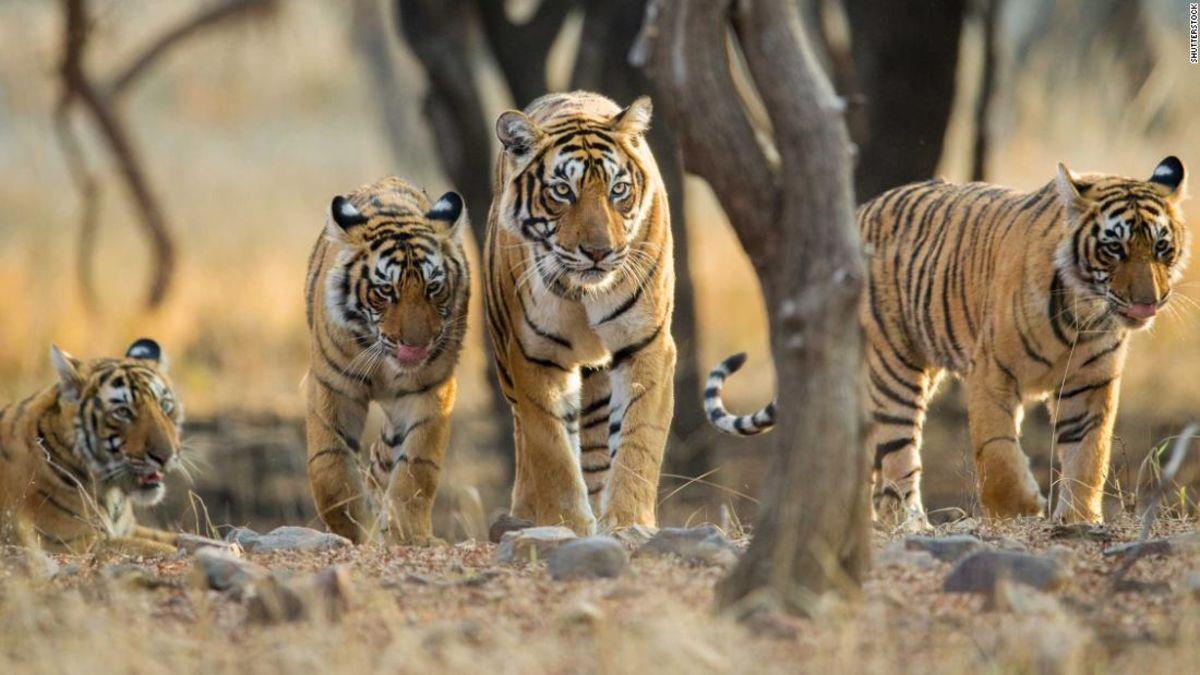
New Delhi: The tiger population of India has rebounded significantly according to a recent report unveiled by Prime Minister Narendra Modi. The number of tigers across the country rose to an estimated at 2,967, stated the All India Tiger Estimation - 2018. According to the country's Tiger Status Report, "The tiger population of India is the largest for any country, accounting for 80% of the global population of 3,159 adult free-ranging tigers. Therefore, the future of tigers as a species, as well as the success of the Global Tiger Recovery Plan at meeting its targets, depends on successful tiger recovery in India." Additionally, Project Tiger, which was initiated in 1973 with nine tiger reserves has now grown to cover 50 tiger reserves covering about 2.21% of India's geographical area. "India's national tiger assessment is the largest biodiversity survey being carried out anywhere in the world," the report states. The numbers behind the fourth census are nothing short of mindblowing. It covered 381,400 km2 of forested habitats in 20 tiger occupied states of India. A foot survey of 522,996 km was done for carnivore signs and prey abundance estimation. In these forests, 317,958 habitat plots were sampled for vegetation, human impacts, and prey dung. Camera traps were deployed at 26,838 locations. These cameras resulted in 34,858,623 photographs of wildlife of which 76,651 were of tigers and 51,777 were of leopards. The total area sampled by camera traps was 121,337 km2. A total of 593,882 man-days were invested in the survey. "A total of 2,461 individual tigers were photo-captured. The overall tiger population was estimated at 2,967. Out of that number, 83 percent were actually camera trapped individual tiers and 87 percent were accounted for by camera-trap based capture-mark-recapture and the remaining 13 percent were estimated through covariate based models," the report states. "Tigers were observed to be increasing at a rate of 6 percent annually in India when consistently sampled areas were compared from 2006 to 2018. New areas colonised by tigers in 2018 constituted 25,709 (28 percent) km square." The report noted that "the poor and continuing decline in tiger status in the states of Chhattisgarh and Odisha is a matter of concern." In Chhattisgarh, numbers fell from 46 in 2014 to just 19 in 2018. According to the report, Dr Matt Hayward, Associate Professor of Conservation at the School of Environmental and Life Sciences at the University of Newcastle in Australia said, "There has been criticism historically about the methods used in previous tiger censuses, however I believe this is the most robust estimate of tigers possible with detectability and observer error clearly accounted for as well as possible, and I can think of no improvements based on the logistical constraints of our current technological and analytic capabilities. "I am confident that the latest estimate of tigers across India is valid and robust, and represents a clear and impressive increase in population size since the previous estimate."